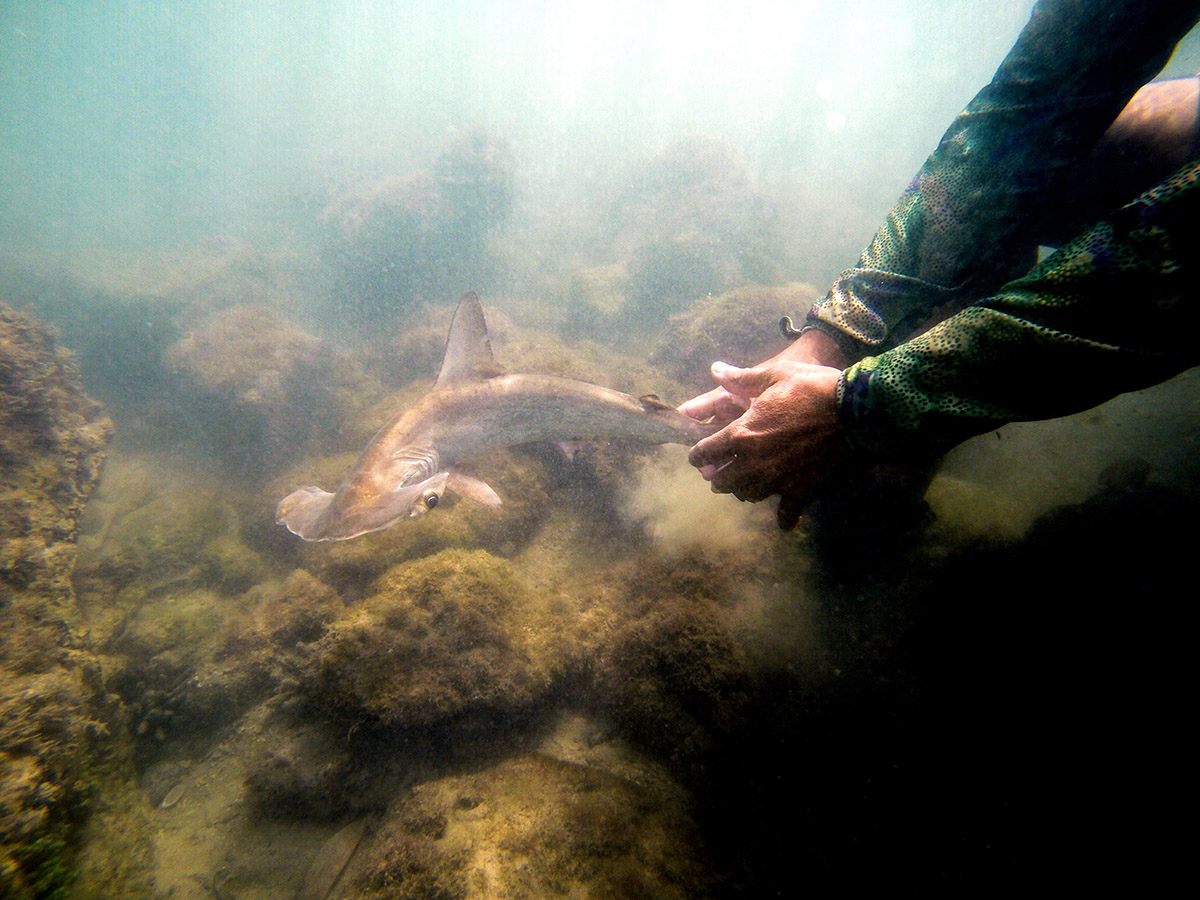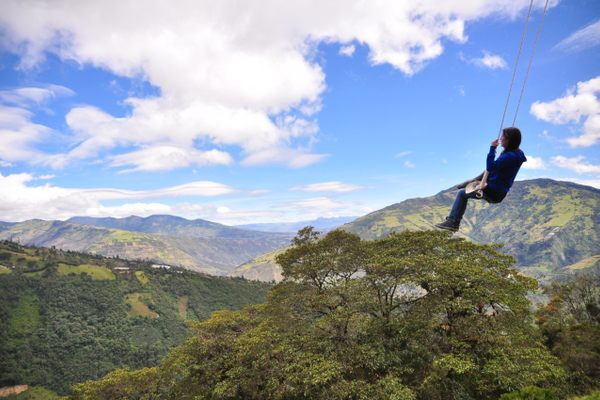Found: A Hammerhead Shark Nursery
Another natural wonder in the Galápagos Islands.

Last November, marine biologists from Ecuador’s Galápagos National Park were exploring a spot near Santa Cruz, one of the archipelago’s largest islands, when they encountered a surprising and heartening sight: dozens of baby hammerhead sharks.
“It was quite by chance that we found this natural nursery for baby hammerheads, a species that is under a high level of threat,” Eduardo Espinoza, a Galápagos National Park biologist told AFP. “It is a unique area, of great interest to conservationists.”
The baby hammerheads were spotted swimming in a shallow, rocky pool hidden among mangrove swamps. “The females arrive to give birth and then leave,” Espinoza told AFP. “The young have all the food they need here and the reefs afford protection from large predators.” He and his team tagged the young sharks with electronic chips to monitor their movements as they leave the nursery, usually two years after they are born. Out in the open ocean they can grow up to 10 feet long and live up to 50 years.
But out there is where the real danger lies for these sharks. In the past 20 years seven out of the nine hammerhead species have joined the IUCN Red List of Threatened Species, and in 2014 the scalloped hammerhead became the first species of shark to be protected by the U.S. Endangered Species Act. Fishing, for shark fin soup, is thought to be a primary cause of their decline.
It is hoped that conservations efforts, such as the establishment of a 23,000-square-mile shark sanctuary between the two northernmost Galápagos Islands—host to the most concentrated population of sharks in the world—and the tracking and protection of these young sharks, will make a positive impact.















Follow us on Twitter to get the latest on the world's hidden wonders.
Like us on Facebook to get the latest on the world's hidden wonders.
Follow us on Twitter Like us on Facebook